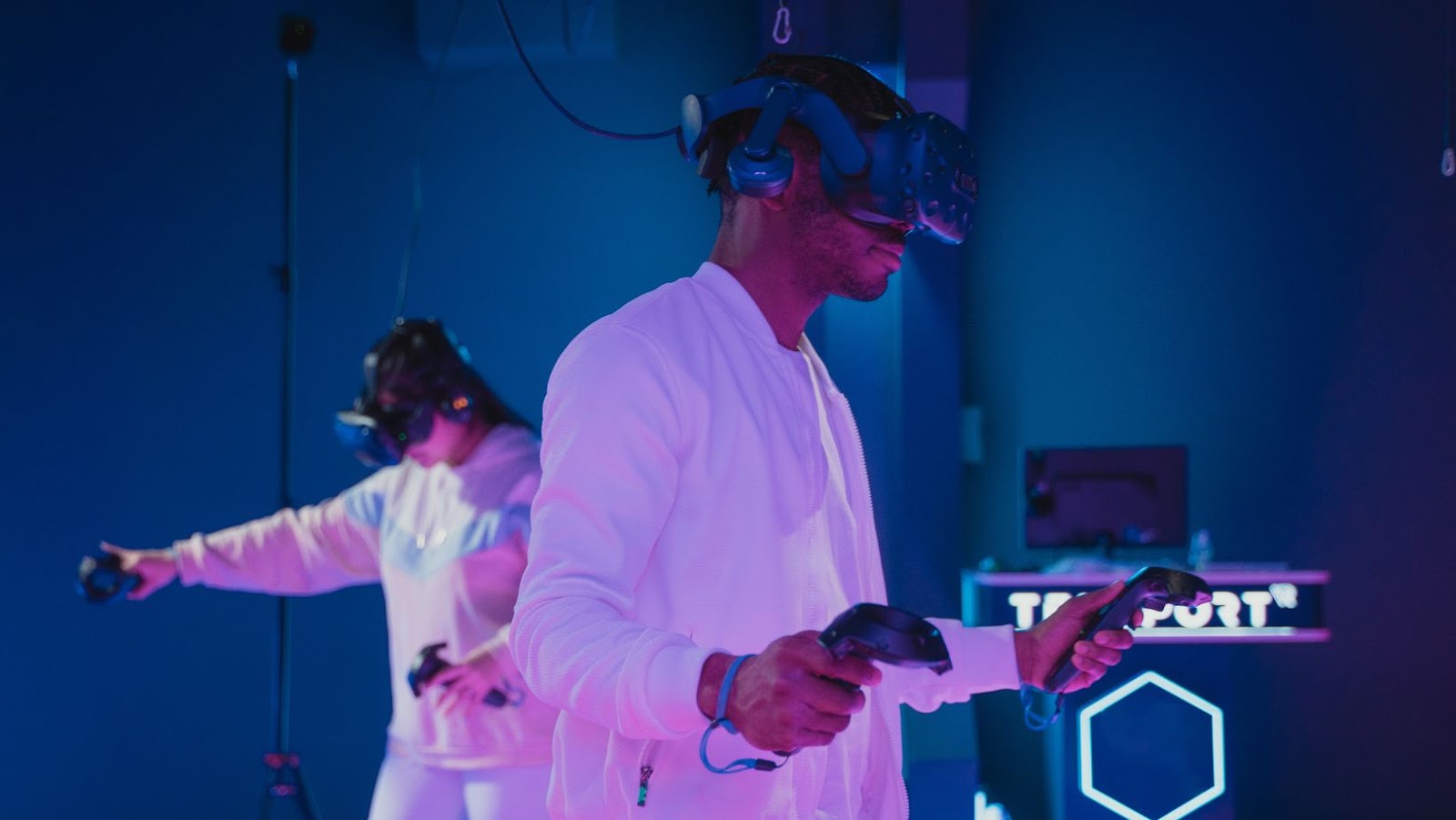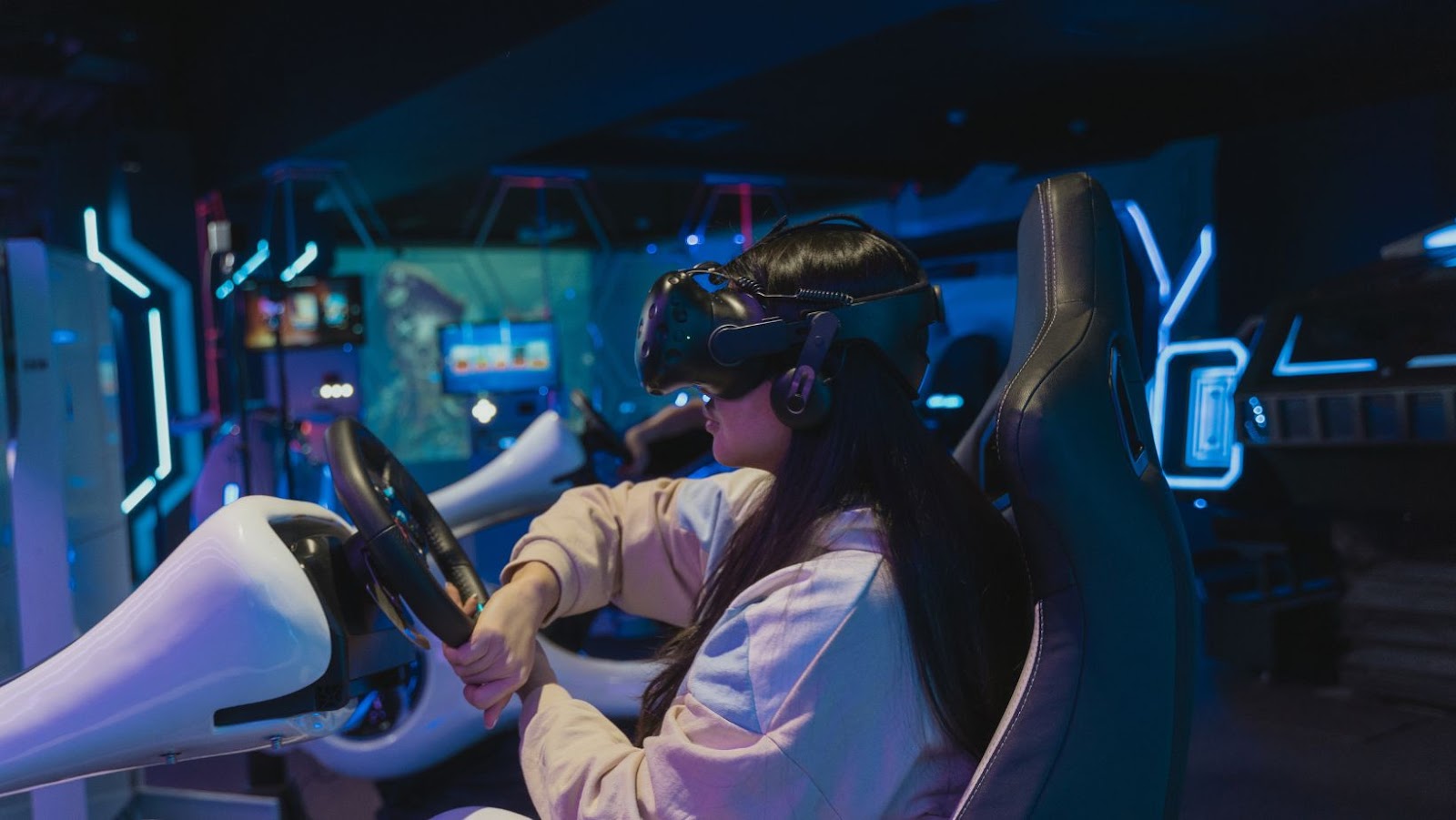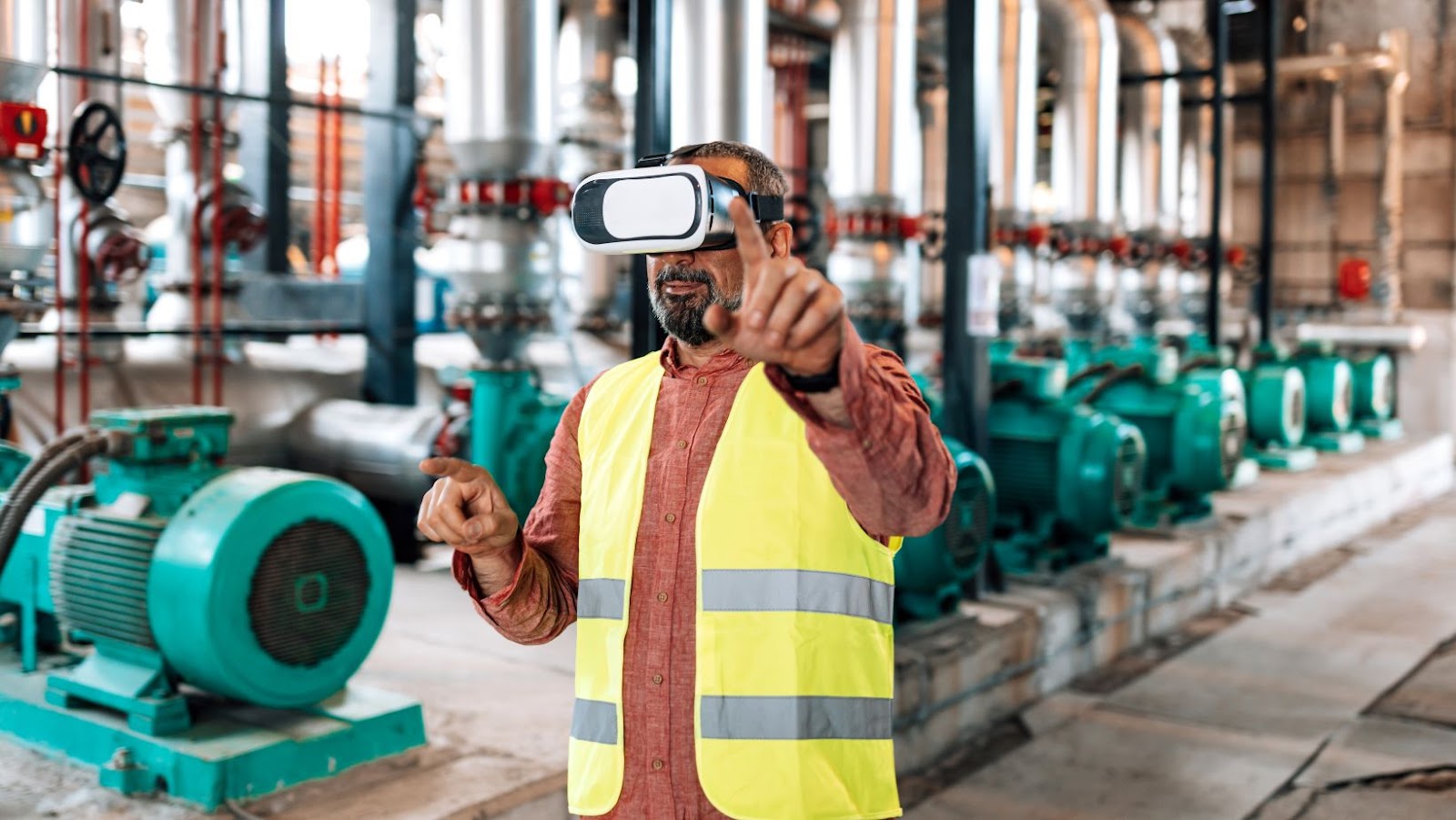 80s VR Headset
80s VR Headset
Ivan Sutherland, quite famously, introduced the first VR/AR head-mounted display system in 1968. However, it took until the ’80s for this technology to become moderately accessible. Spearheading VR’s journey in the ’80s, Jaron Lanier, founder of VPL Research, refined VR technology and developed a variety of VR gear, including the DataGlove and the EyePhone Headset. VPL Research’s headsets are widely regarded as the first commercially available VR headsets.
In tandem, NASA’s Ames Research Center was also exploring VR solutions. They coined the term “virtual environment,” marking the birthplace of immersive simulations for practical training, mainly for astronauts. NASA’s VIEW (Virtual Interface Environment Workstation) system became operational in 1985 and also included a symbolic gesture glove and a head-mounted eye display, similar to Lanier’s inventions.
Immersive reality, primarily characterized by a sense of presence in a non-physical world, became a central goal of VR technology in the ’80s. This concept aspired to fully envelop the user’s senses, offering a convincing illusion of exploring an artificial world unaffected by the physical world’s limitations.
The two examples of 80s VR technology indicate this pursuit of immersive reality. Lanier’s EyePhone system, despite its monochrome display and less than 0.06 megapixels per eye, provided a surprisingly compelling experience. Meanwhile, NASA’s VIEW system used immersive VR for realistic, risk-free simulation training environments, encapsulating the essence of immersive reality.
 Examining the Features of 80s VR Headsets
Examining the Features of 80s VR Headsets
Diving deeper into the mechanisms of 80s VR headsets, one can tinker with features central to the era’s technology. These crucial characteristics, namely the visual display, resolution, user interaction, and motion tracking, shaped the landscape of VR technology as we know it today.
During the 80s, VR headsets might have lacked the high-definition displays of today’s models, but they were revolutionary for the time. Equipped with a CRT (Cathode Ray Tube) display, these innovative devices offered a field of view ranging from 35 to 60 degrees. The resolution of these headsets stood at about 240×240 to 276×372 pixels. They provided a monochromatic stereoscopic 3D experience, thereby laying the groundwork for the immersive 3D environments we see in modern VR systems.
The interaction with the virtual environment, key for immersion, displayed innovative strides in the 80s. VR pioneers integrated basic motion tracking systems to track user movements. Most notably, the NASA VIEW system utilized an electromagnetic tracking system, providing data on the position and orientation of the user’s head. Key to user interaction were wearable gloves, like VPL Research’s “DataGlove”, that could track hand movements. These gloves converted hand gestures into actions within the VR environment, heralding a new dawn for intuitive, user-centric technologies. As rudimentary as these systems may seem compared to today’s intuitive systems, they represented a significant step towards immersive, interactive virtual experiences.
 The Impact of 80s VR Headsets on Gaming
The Impact of 80s VR Headsets on Gaming
The evolution of VR headsets in the 80s drastically impacted the gaming landscape. This era fostered the birth of new gaming concepts and the pioneering of immersive gaming experiences.
Building on prior VR advancements, game developers introduced several notable titles in the 80s that utilized VR technology. For instance, Battlezone, a game released by Atari, employed a primitive kind of VR. It enforced a periscope-like viewer for a first-person perspective, immersing players in a real-like gaming scenario. Another innovative title, I, Damiano: The Wizard of Partestrada released by Cognetics Corporation, utilized the DataGlove for interactions, ushering in a new era of immersive gameplay.
Yet, arguably the most significant game from this era was Maze War. It sits at the intersection of technology and gaming, marking a significant leap in the development of both FPS (First Person Shooter) and MMORPG (Massively Multiplayer Online Role-Playing Game) genres. These games laid a foundation for the future of VR gaming, shaping what would later evolve into our current digital reality.
The development of VR gaming consoles and accessories during the 80s complemented the growth in immersive gaming. Sega’s “SegaScope 3D Glasses” emerged as a popular accessory, utilized with the Sega Master System to add a degree of depth perception to certain games. Accessories like VPL’s DataGlove brought a new level of interactivity, enabling players to handle virtual objects directly.